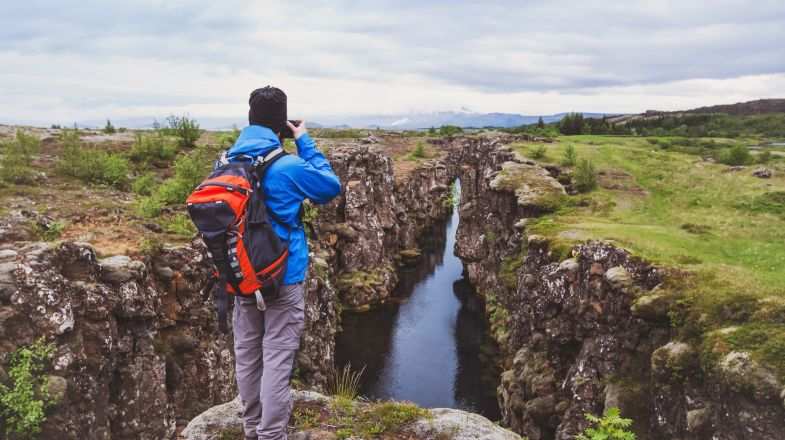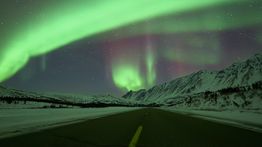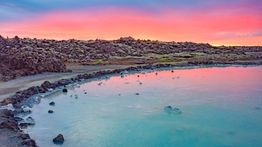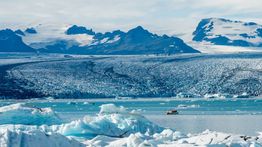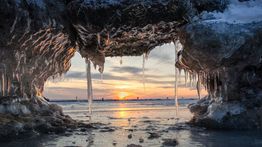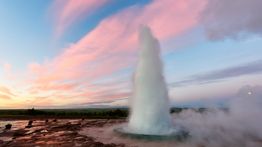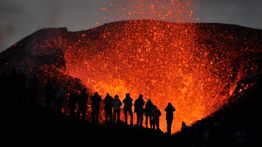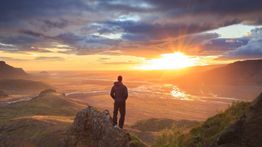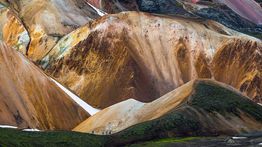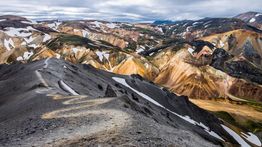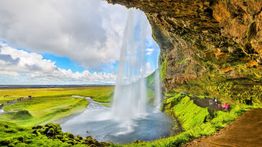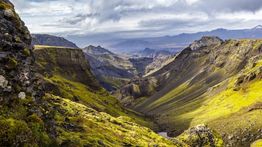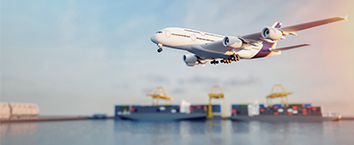Top National Parks in Iceland
Iceland currently has three national parks in all, the largest of which is made up of what was once 5 different national parks. These parks contain a vast array of geographical features and represent Iceland’s efforts to preserve their natural beauty and ecosystems, while also making them accessible to a public that is keen to learn about the marvelous wilderness from which their home has been carved. Safe to say, there is no shortage of things to see and places to visit in Iceland. Take a moment to peruse some details about the top national parks in Iceland and let the dream of a wilderness adventure ignite your imagination for your next Iceland trip.
- Trish C.
- From USA


Thingvellir National Park has a fascinating history and natural beauty and is considered to be one of the best national parks in Iceland. With so much to see at this venue there truly is something for everyone. Whether your interests are in anthropology, geology, biology, or just the joy of the great outdoors, this park is a place where your curiosity can be both stimulated and satisfied.
Highlights:
- Take a walk through a rift valley that will have the North American tectonic plate on one side of you, and the Eurasian plate on the other side.
- The Largest Lake in Iceland, Lake Thingvallavatn presents a beautiful underwater landscape that serves as a habitat for 50 invertebrates and 150 types of plants; snorkeling or scuba diving in the rifts is the best way to get up close and personal with this amazing ecosystem.
- There are numerous options available to fill your time like camping, hiking, fishing, and horseback riding.
Lowlights:
- If you are planning to go scuba diving or snorkeling, you must have a dry suite certificate, or a minimum of ten registered dry suit dives within the last two-year period; documentation will be required if you wish to dive.
- Be prepared to pay a fee to use the restroom facilities; 200 isk, or about $2.00 U.S. is the price to use the bathroom at this location.
Fun fact: Thingvellir National Park is the sight of Althing, where between the years 930 and 1798 representatives of the various Icelandic clans would meet face-to-face to settle disputes and maintain the balance of power between the various chieftains.
Thingvellir National Park Facts:
- Size: 127 km²
- Elevation: 100 meters above sea level
- Common animal sightings: Fifty-two different species of bird live near the lake, including the great northern diver; fox and mink may also make the occasional appearance along the lakeshore.
- Best Season to visit: June – September since campgrounds are open during this period.
- Nearby attractions: As one of the three main stops on “The Golden Circle” tour this is a fascinating destination; the other two stops are the Gulfoss Waterfall and Haukadalur where visitors can view the Strokku geyser which erupts with regularity as many as twelve times per hour, so make sure to not miss them when visiting Thingvellir National Park.

Often referred to as “Iceland in miniature”, the western peninsula where Snæfellsjökull National Park park is located offers a diversity of landscape that is truly breathtaking. This is the only national park in Iceland that stretches to the seashore, giving you a view of the land, sea, lava rock, and ice in an awe-inspiring landscape.
Highlights:
- Birdwatchers will find an abundance of birds along the coast and in the lowland regions of the park; be sure to bring your binoculars!
- The Snæfellsjökull glacier is the crown jewel and is revered as a spiritual energy center of the earth. The glacier offers a majestic view of the diverse landscape.
- Take an hour-long tour into the depths of Vatnshellir Lava Cave and you will begin to wonder if you have walked onto the pages of a Jules Verne novel.
Lowlights:
- Most cave tours in Iceland are only available during the summer months, but just the same, be sure to dress warmly for the tour, temperatures are as low as 6 degrees Celsius.
- When hiking in the area, watch out for crevasses.
- Bathroom facilities are not available at all locations so be prepared.
Snæfellsjökull National Park Facts:
- Size: 170 km²
- Elevation: 1,446 meters
- Common animal sightings: Fox, mink, and mice are the most likely land mammals to be seen, but if you walk along the coast you may be rewarded with a sight of either common or grey seals, and possibly even a killer whale, minke whale, or porpoise. If you’re on the lookout for birds you just might see a white wagtail, ringed plover, purple sandpiper, or ptarmigan.
- Best season to visit: June – September
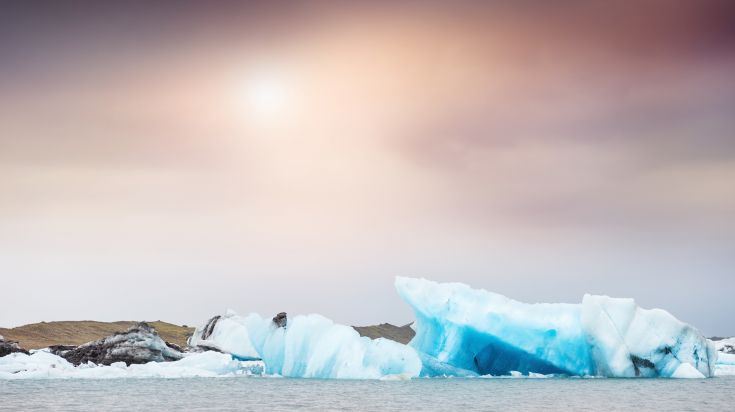
This enormous national park is made up of what was once three separate parks, making it the largest in all of Europe. A vast diversity of terrains and activities are available in this park, making it a favorite destination for thousands each year.
Highlights:
- Camping is permitted, and in some areas, huts are available for rental.
- Numerous services are available such as washing machines, showers, and other facilities. However, these are not free. Expect to pay a fee for the use of these services.
- Hvannadalshnjúkur, Iceland's highest mountain peak is a sight to behold.
- Dettifoss, a waterfall that thunders down 45 meters and stretches 100 meters across is purported to be the most powerful waterfall in all of Europe.
- Charter a private boat tour of Fjallsarlon Glacier Lagoon.
Lowlights:
- Due to longer daylight hours and warmer temperatures some ice caves in the region are more dangerous at certain times of the year. Precautions must be taken to ensure safety when visiting those ice caves.
- Due to the vast network of hiking trails, the remoteness of some of the locations, and the general ruggedness of the terrain and weather, trails can be treacherous. Hike with caution.
- Be sure to take appropriate equipment with you, good hiking boots or trail shoes are advisable as the terrain can be quite rugged in places. Use common sense, and be particularly careful when trails are wet or icy.
Vatnajökull National Park Facts:
- Size: 13,920 km²
- Elevation: 2,109.6 meters at its highest peak.
- Best Season to visit: July – September

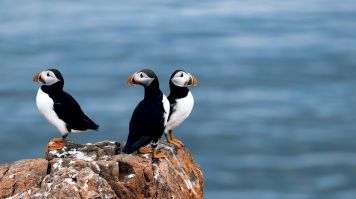
Skaftafell National Park was joined with Jökulsárgljúfur National Park and is today part of Vatnajökull National Park. While there are no roads within the park, a series of hiking trails of various lengths and difficulties give visitors access to some of the most beautiful landscapes in Iceland.
Highlights:
- Ranger-led hikes provide a guided tour of some of the trails with educational commentary provided by knowledgeable wilderness professionals.
- Chartering a flight from Atlantsflug will let you see the park from the air.
- The Svartifoss Waterfall is a sight to behold. Take a hike and see water plummeting over some of the most interesting rock formations of black columnar basalt that you could hope to see.
- Skaftafellsjökull glacier.
Lowlights:
- While campsites are readily available, the gravelly ground may make it difficult to drive in your tent pegs.
- Large portions of the park are accessible only by foot.
- The glaciers are in retreat; as a result of global warming.
Skaftafell National Park Facts:
- Size: 4,807 km²
- Elevation: 2,109 meters
- Common animal sightings: Arctic foxes, and numerous bird species are seen in this area.
- Best Season to visit: Summer, warm and sunny days make this the best time to visit.
- Nearby attractions: Kirkjubæjarklaustur, Svínafell, Hof, and Kálfafell; visit the wood and turf church of Hoff for a picturesque treat.
5. Jökulsárgljúfur National Park (now Vatnajökull National Park)

In the far northern reaches of Vatnajökull National Park runs the river Jökulsá á Fjöllum, fed by the melt of the Vatnajökull glacier this river was the centerpiece of the previous Jökulsárgljúfur National Park.
Highlights:
- Jökulsárgljúfur Canyon — a sight worth seeing, this large river canyon is one of the grandest in Iceland.
- The Selfoss, Dettifoss, Hafragilsfoss, and Réttarfoss waterfalls provide a spectacle for hikers to enjoy along the journey.
- Several trails offer different difficulty levels for both inexperienced and experienced hikers. Regardless of the trail you choose, there is plenty to see in this picturesque park.
Lowlights:
- Some of the hiking trails are too difficult for inexperienced hikers. So, choose your path wisely. Watch out for falling rocks on the more difficult trails.
- Do not go close to the rim of the canyon near waterfalls in the winter, the mist can freeze, making the edges very slippery.
Jökulsárgljúfur National Park Facts:
- Size: 153 km²
- Elevation: 2,109 meters
- Common animal sightings: There are birds in abundance in these beautiful canyons, including, but not limited to: wrens, snipes, redwings, plovers, meadow pulpits, falcons, ravens, and more.
- Best Season to visit: June – September
- Nearby attractions: Aside from the park itself, and the beauty of the nature all around you, there are not many nearby amenities. The closest restaurant of any kind other than a snack bar is the N1 gas station on Route 85. You had better pack a lunch to take with you before you go.
Iceland is truly a remarkable place. Apart from national parks, you can opt to visit the incredible ice caves, explore the magnificent geysers, go on an extensive hike in the scenery, or take a refreshing dip in the hot springs. To plan your visit to the country, make sure to check out our travel guide on the best time to visit Iceland and how long to spend in Iceland. Spending at least 7 days would give a good taste of all the must-see highlights. If you have limited time on your hands, you could opt for spending at least 3 days, which would give a glimpse of all those attractions. Also, if you need ideas on things to do in the country, take a peek at our other travel guides on the where to see the Northern Lights, which glaciers to visit, how to plan a road trip for the Ring Road, which volcanoes to explore, where to go whale watching, which Icelandic food to try, and which waterfalls to discover.
The national parks of this rugged land are eclectic and majestic, rugged and delicate, and in all their beauty and boldness they call out to the willing and say, “come and see!” If you answer the call, you will not be disappointed, so choose your destination, lace up your boots, load up your knapsack, and get ready to hit the trail because there are plenty of things to do in Iceland.
